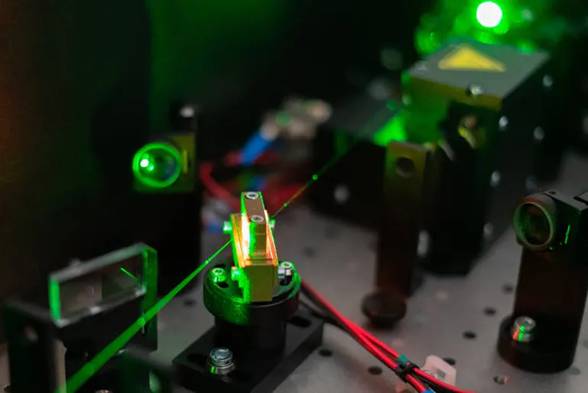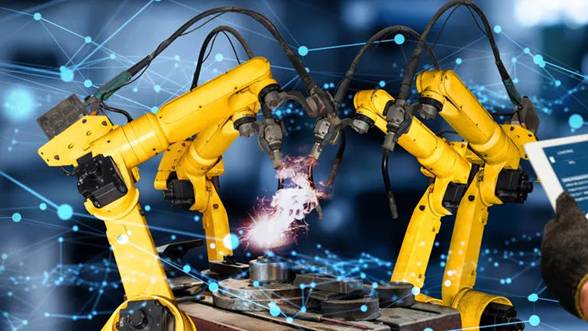How artificial intelligence benefits the manufacturing industry
Time:2023-12-21
Views:382
Author: Sara Jensen, Technical Editor of Power&Motion Magazine



Artificial intelligence helps improve the efficiency, quality, and productivity of manufacturing operations.

The application of artificial intelligence (AI) in manufacturing and a series of other industries is increasing day by day. Artificial intelligence can continuously learn and process information, thereby helping to analyze data and solve problems.
The capabilities possessed by artificial intelligence provide the possibility for manufacturers and other users to improve operational efficiency and productivity.
Power&Motion magazine interviewed Murad Kurwa, Vice President of the Intelligent Manufacturing Engineering Team at Wistron, a global technology, supply chain, and manufacturing solution provider, to explore the advantages of artificial intelligence in the manufacturing industry and Wistron‘s insights into trends in the field of artificial intelligence.
*Editor‘s note: For clarity, both the questions and answers are edited versions.
Power&Motion (hereinafter referred to as P&M): How do you view the application of artificial intelligence (AI) in the manufacturing industry?
Murad Kurwa (hereinafter referred to as "MK"): Artificial intelligence (AI) can benefit some manufacturing processes. When deciding how to deploy AI technology in the factory workshop, it is important to start from the ultimate goal and then use technology to help achieve this goal, such as factory production line optimization, predictive maintenance, anomaly detection, inventory management, and bottleneck prevention, etc.
Based on the ultimate goal, the AI model lifecycle can be created by collecting and organizing data, selecting the type of AI model to use, training the model, determining whether the model‘s performance is sufficient to achieve the ultimate goal, and finally deploying it into production.
In addition, to derive value from artificial intelligence, it is also necessary to ensure that the model can run properly and expand according to the manufacturing speed we need. Over time, through continuous learning and improvement, these programs can help us significantly improve work quality and efficiency, and help us make wiser, data-driven decisions.
P&M: What benefits will the use of artificial intelligence bring in production operations?
MK: Artificial intelligence helps improve efficiency, quality, and productivity, using some of the use cases I listed earlier as examples.
In terms of predictive maintenance, artificial intelligence solutions can help collect, analyze, and detect workshop machine problems before they occur. With the abundant upstream data provided by connected machines, artificial intelligence models can make predictions before adverse events occur, enabling manufacturers to prevent potential failures and avoid downtime.
In terms of anomaly detection, manufacturers can train artificial intelligence models for quality control by detecting product defects and anomalies, reducing the need for manual detection and improving product uniformity and quality. Anomaly detection can also be applied at the process level: Artificial intelligence models can utilize a large amount of data from manufacturing execution systems (MES), machines, and operators to detect anomalies throughout the entire process, thereby avoiding any possible downtime.
Besides operations, another effective use of artificial intelligence in the manufacturing industry is to review contracts. Artificial intelligence language models can view contracts, review "red lines", summarize and detect key content, greatly reducing the overall processing time of contracts.
Overall, the use of artificial intelligence can help personnel at all levels of an enterprise make data-driven and informed decisions in real-time, thereby saving significant costs and improving efficiency.
At the same time, artificial intelligence can also help detect abnormal situations in the production process, reducing the need for manual inspection while ensuring quality.

P&M: Can you give an example and share your perspective on the effective deployment of artificial intelligence?
MK: In some of Weichuangli‘s factories, we have deployed artificial intelligence to improve the quality inspection process. Traditionally, this is a task completed by an operator.
Let me give an example to illustrate how AI technology works: on a specific production line, we have two almost identical capacitors. The only difference between the two components is the valve. This subtle difference is difficult for the human eye to distinguish anomalies, and once the wrong capacitor is used, the product will not function properly.
By using visual data and artificial intelligence models, our advanced manufacturing technology can check whether operators have placed components in the correct position and provide feedback to solve any problems in real-time. This not only improves performance and yield, but also enables us to identify critical issues before the components are sent to the next step of the production line, thereby reducing the probability of scrap occurring.
P&M: So, how does Weichuangli collaborate with artificial intelligence and help customers leverage AI technology?
MK: At Weichuangli, we are applying artificial intelligence to eliminate bottlenecks in the testing process of printed circuit board assembly (PCBA), which used to require a lot of manpower and time.
In an example, the PCBA functional testing at the end of our customer‘s production line consists of four stages, one of which takes more than 2 hours and more than 50 steps to complete. If any fault or abnormality is detected in any step of this process, the equipment needs to return to the origin to resolve the fault, and then restart the entire testing process. This greatly affects production and increases delivery time, especially when faults occur in the later stages of the process.
At this point, we analyzed the historical data of each testing step and developed a new plan to rearrange the priority order in the most efficient and reliable way using an AI/ML (machine learning) classification model. By doing so, the overall testing time can be reduced by 30%, and even in the event of a malfunction, the testing time can be reduced by 50%.
By providing these insights and optimizations, we have deepened our partnership with customers, who will integrate product and test design optimizations into their next generation products.
Integrating artificial intelligence with other Industry 4.0 technologies helps create more productive and efficient smart factories.

P&M: How do you predict the development trends of AI applications and capabilities in the coming years?
MK: Machine interconnection, artificial intelligence, and other Industry 4.0 technologies have the ability to create smart factories and change operational status at various levels. Artificial intelligence based systems will continuously learn to become more intelligent and recognize more patterns, making manufacturing processes more efficient over time.
The ultimate skill of artificial intelligence in the manufacturing industry is to achieve closed-loop autonomous control. This is essentially equivalent to combining AI with other Industry 4.0 technologies to achieve self correcting autonomous systems, thereby maximizing manufacturing performance in terms of output and quality.
For example, on an automated PCBA production line, all assembly work is completed by robot units, which are connected to a data lake and send real-time process data. And the anomaly detection artificial intelligence model will use this data to detect anomalies in the process and determine the parameters that cause the anomalies. Then, the feedback control loop will use this inference to automatically correct the parameters in the process (such as changing the parameters in the robot unit).
This advanced self detection and correction system utilizing artificial intelligence brings the "detection point" closer to the "origin" and does not allow defects to affect the entire process. Looking ahead, this can be achieved through the most advanced Industry 4.0 technology and artificial intelligence.
In addition, we will also see the widespread application of artificial intelligence models in non operational manufacturing areas such as supply chain optimization and management.
|
Disclaimer: This article is transferred from other platforms and does not represent the views and positions of this site. If there is any infringement or objection, please contact us to delete it. thank you! |











